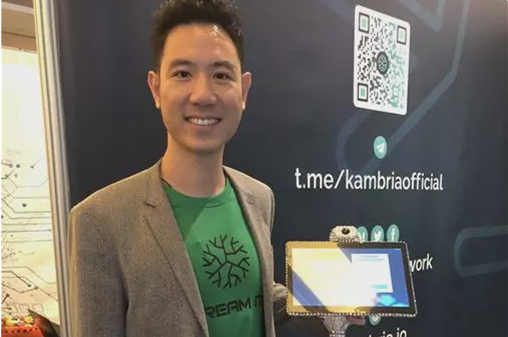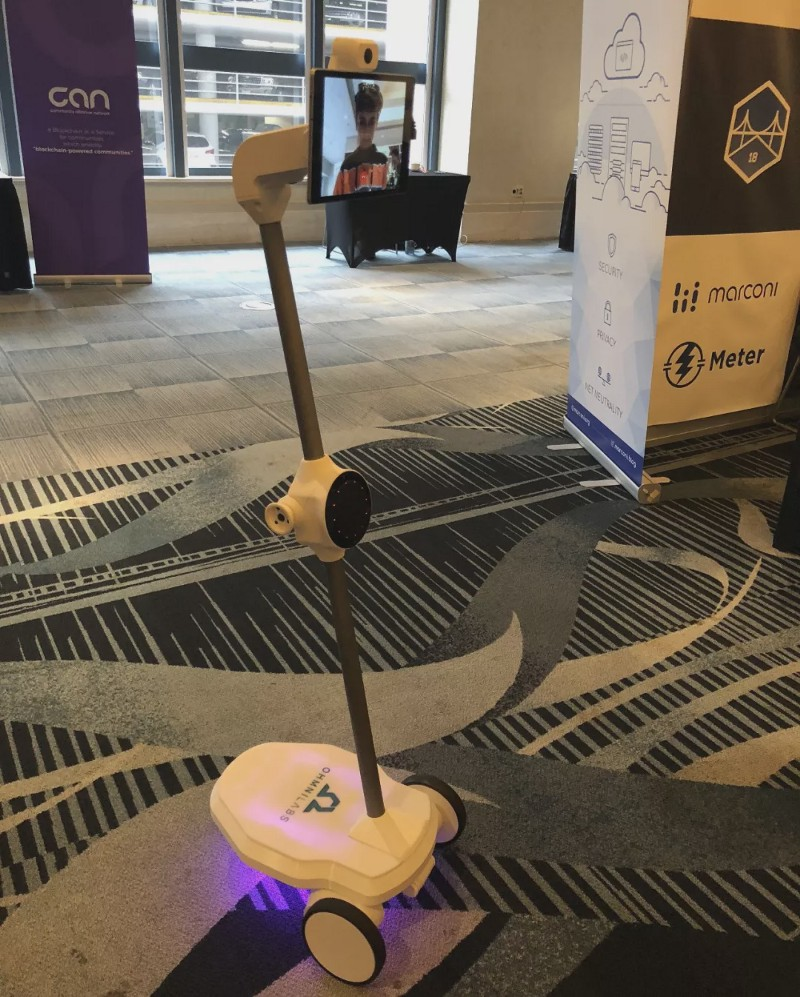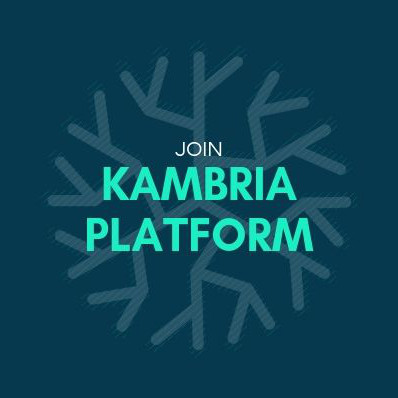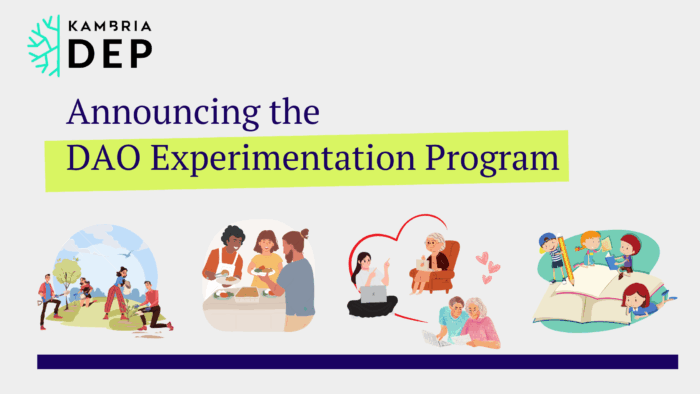How hard is it to produce a robot? Developers cannot agree more with the answer. Production of robots require integrating technologies ranging from software development, artificial intelligence, hardware design, and manufacturing, which may consume an entire research department of a single company. Kambria, a blockchain company of Silicon Valley, strives to solve the problem of robotic technology being “locked up” by proprietary techniques and high cost by taking advantage of community, open-source development, and economic incentives of the blockchain. So far, Kambria is in partnership with enterprises in Vietnam, Japan, Australia, and the United States in verticals such as robotics, data analysis, and even flying cars.
“Actually, robots are locked up. We believe that robots can be used to do a lot of things, so why not?” confessed by Dr. Thuc Vu, the co-founder of Kambria, when being interviewed by DT. There are several challenges for the robotics industry. First, due to the wide range of technologies and high cost, only big companies have sufficient resources to invest in R&D in most cases. Second, big companies rarely share the results of R&D with others due to the enormous cost. For these reasons, many projects or researches are now exploring the same or similar technologies based on commercial interests. “Companies are used to keeping the results of R&D a secret,” which is not unusual since it’s primarily developers who believe in open-source technology are willing to drive the industry through by sharing and openness.
As a result, Kambria is creating a platform that aggregates developers, robotics manufacturers, and companies wanting to connect with other robotics and component manufacturers. Developers or robotics manufacturers can be paid to make their code and hardware design available on the platform. Furthermore, companies in need of robots can create projects on Kambria to attract developers in the community with funds. Sure enough, they can also get access to talent here. In the past, matching all parties, valuation, and benefit sharing was quite complicated and controversial, but now, those tasks can be handled automatically by a smart contract on the blockchain. This means developers can share resources in a reasonable and feasible manner without worrying about encroachment on interests.

More than 300 Telepresence Robots Sold
The idea for Kambria to create a dedicated open source community for robotics and other technologies originated from the founders’ hardships. OhmniLabs, a robotics company founded three years ago, launched the first Telepresence Robots (at $1,495), in September 2017. The robot can be controlled by the user on laptops to move and play video, etc. Dr. Thuc Vu is one of the founders of OhmniLabs. It is worth mentioning that Katango, a social messaging company also founded by Dr. Vu, was acquired by Google in 2011; the team and technology were merged into Google+.
According to Dr. Vu, more than 300 OhmniLabs robots have been sold and are mainly being used by the aged and in education. Sales performance is satisfactory for a robotics start-up, with mass production and actual clients being achieved.
However, for startup OhmniLabs, the process of developing robots was beset with difficulties from building labs to reaching out to supply chain companies. “Actually, technologies can be shared, and blockchain can address the problems of cost and time waste which result from repeated resource input.” This idea inspired Dr. Vu to establish Kambria.
For the positioning of the two corporations, Kambria is just like Linux Foundation, which specializes in the development of technology and ecosystem, and OhmniLabs is just like Ubuntu, which specializes in the production and making profits.
Setting Up an Ecosystem with “Three Feet”
Attracting developers is crucial for building a robotics ecosystem, but how do you compete with an existing group of developers? For this question, cooperation prevails over competition. According to Dr. Vu, Kambria has reached cooperation with ROS (Robot Operating System), the largest development community of robots, as the developers can choose to share codes for free to receive token benefits in future. Same with GitHub, a well-known development community platform, which focuses on “software resource.” But since the hardware is also important for developing robots, Kambria will provide access to open-source hardware resources, such as mechanism design, board design, etc..
In short, Kambria has three core elements:
1. KDNA code library and development language developed by Kambria. It contains numerous modules, which can be used to produce specific robots or robot components. Taking OhmniLab’s Telepresence Robot as an example, electrical engineering (motor control board), firmware (commutation algorithm), mechanism design (shell, interface, etc.) and software API are involved in the motor system alone. What’s more, KDNA is suitable for both hardware and software, “enabling software or hardware developers to communicate with each other in the same language for developing technologies.
2. Manufacturing Alliance. After developing the robot, developers have to face challenges of prototype testing or production. Given that most component or assembly plants were unwilling to undertake tiny orders in the past, Kambria, based on it OhmniLabs experience, aggregates supply chain resources to enable robot corporations to place tiny orders (at least 10) for components. Why is the manufacturing alliance willing to accept tiny orders? According to Dr. Vu, taking investment into consideration, suppliers can either share benefits based on sales or become investors of robot corporations when mass production of these robots is achieved in the future.
3. Marketplace. Developers can submit their codes or designs to Kambria codebase, the KDNA platform described above, which is just like a technology pool. Since all the modules are connected to Ethereum’s smart contract, developers will be rewarded with KAT tokens whenever codes or designs are utilized, as rewards increase along with the number of users. Companies can also reward talents or solutions with KAT tokens. In addition, they plan to launch a robots app store, on which developers or companies can market new applications or features. Kambria plans to launch these three services in the coming year in succession.
In addition to KAT tokens, Kambria has also designed another token, Karma, which is non-transferable and cannot be purchased with capital. Instead, it is mainly designed to reward contributors to the community and motivate developers. Karma holders are entitled to share usage bonus generated from Kambria platform.
Defining the Platform’s Value
Knowledge is valuable, but how to determine the “price” of codes and designs as multiple technologies are involved in robots? According to Dr. Vu, the value is determined in a decentralized protocol based on the following 3 ways:
1. Being evaluated by experts, as Kambria will invite third-party experts to give advice.
2. Income generated directly, such as rewards for projects or competitions.
3. The increase of benefits along with the number of users. Developers are motivated to interact with other members in the community and introduce their plans to more people to make them understood and seen before being used widely.
Robotics has always been an interesting and sexy topic, but there are some negative perceptions about its future in the industry due to the number of robot startups. Not long ago, Rethink Robotics founded by Rodney Brooks, the former director of CSAIL of MIT, but eventually declared it was closing, which goes to show that even MIT cannot guarantee success in the market.
“Open source is crucial, and we need leaner development approaches and lower cost solutions to improve robotics,” emphasized by Dr. Vu. No one needs to develop repeatedly since community cooperation is a better option. For example, traditional Injection Molding is replaced by 3D printing in producing the body of OhmniLabs robots to reduce costs.
However, Dr. Vu believes that “market demand does exist and is tremendous.” A lot of big companies interested in robotics reach out to him, but they don’t have the competence in independent-development because they are not technology companies. Moreover, robot solutions on the market may need customized sensors and controllers. For example, Toppan, a Japanese topographic printing company, resorts to Kambira. What’s more, Kambria has signed agreements with a well-known industrial group in Vietnam, and they will cooperate in projects such as robotics and data analysis.
With the continuous advancement of technology, there is no doubt that robots will enter daily life sooner or later. Together with developers, Kambria strives to unlock the shackle on robots and to accelerate that day’s arrival.
Website: https://kambria.io/
Whitepaper: http://bit.ly/2JbuET7
Telegram (ENG): https://t.me/kambriaofficial
Telegram (KOR): https://t.me/KambriaKorea
Telegram (VIE): https://t.me/KambriaVietnam
Telegram (CHN): https://t.me/KambriaChina
Twitter: https://twitter.com/KambriaNetwork
Facebook Page: https://facebook.com/KambriaNetwork
Facebook Group: https://www.facebook.com/groups/kambria/
Reddit: https://www.reddit.com/r/KambriaOfficial/
Medium (ENG): https://medium.com/kambria-network
Medium (CHN): https://Medium.com/kambriachina
Steemit: https://steemit.com/@kambrianetwork
Weibo (CHN): https://www.weibo.com/kambriachina
Email: info@kambria.io
![[MIT China] Kambria Unlocks the Shackles on Robots MIT Review China Kambria](https://blog.kambria.io/wp-content/uploads/2019/03/1200px-MIT_Technology_Review_logo-740x492.jpg)








